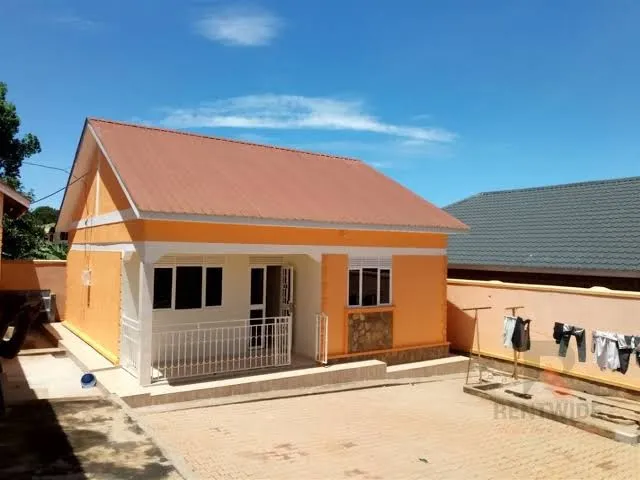For many Ugandans, the idea of owning a home feels out of reach. With rising living expenses and low wages, building a house is often viewed as something only wealthy individuals or real estate developers can afford. However, according to Bruce Nuwagaba, a construction engineer, this belief is misleading. He argues that with careful planning and realistic expectations, even someone earning between Shs700,000 and Shs1 million per month can construct a decent two-bedroom home.
The key, according to Nuwagaba, lies in smart budgeting, practical choices, and avoiding unnecessary luxury finishes. While the cost of construction has increased over time, understanding the breakdown of expenses and knowing where to cut back can make home ownership a practical goal for the average Ugandan.
Understanding the Total Cost
A basic two-bedroom house suitable for a small family can cost anywhere between Shs70 million and Shs90 million. This estimate assumes the use of moderately priced materials, avoiding expensive finishes and luxury fittings. It’s also important to note that this figure does not cover general exterior works such as compound paving, boundary walls, landscaping, or septic tanks, nor does it include VAT. However, with a phased construction plan, one can spread the expenses over time, making it easier to manage.
The process begins with having licensed building plans prepared by a professional planner and approved by municipal authorities. Once the legal groundwork is set, construction can begin with site clearance and foundation work.
We Will Build a Website For You in 4 Working Days. Click on This Link to Contact Us
Breaking Down the Construction Stages
1. The Foundation
For a standard two-bedroom house, a strip foundation is usually recommended. This type of foundation involves a continuous strip of concrete under load-bearing walls. It’s one of the most affordable yet structurally sound options for average soil conditions.
Excavation for the foundation can cost as little as Shs7,000 per cubic meter, with labor included. If your land is in a waterlogged area, however, additional reinforcement will be needed. In such cases, you might require hardcore material for stabilization, which costs around Shs65,000 per cubic meter.
We Will Build a Website For You in 4 Working Days. Click on This Link to Contact Us
Sometimes, the excavated soil cannot be reused for backfilling due to poor quality. In such cases, well-graded murram may be needed, costing between Shs25,000 and Shs30,000 per cubic meter in areas like Wakiso.
2. The Walls
The decision to use bricks or concrete blocks is one of the most crucial cost factors. Well-burnt clay bricks are the more affordable option, priced at approximately Shs380 each. In contrast, concrete blocks are significantly more expensive, at around Shs3,300 each including transportation.
Cement is another vital component. The price varies based on the type and brand. Pozzolana Tororo Cement (CEM IV) costs about Shs26,000 per bag, while the stronger Ordinary Portland Cement can go up to Shs41,000. Both types are suitable for plastering, brick laying, and concrete work, depending on the required strength.
Sand, a basic but essential material, costs about Shs70,000 per cubic meter. Together with cement and water, it forms the mortar and concrete used throughout the structure.
3. The Roof
Roofing is often one of the most expensive components of a house, but it doesn’t have to break the bank. Timber is needed for the roofing frame. Kalitunsi (eucalyptus) timber pieces cost about Shs7,000 each, while pine goes for about Shs8,000 per piece.
For covering the structure, galvanized iron sheets are a common and durable option. A 26-gauge versatile iron sheet costs around Shs65,000. The total roofing cost will depend on the house size and the complexity of the roof design, but sticking to a simple gable or hipped roof can help reduce costs.
4. Finishes
The final stage of construction is what gives your home its identity and comfort. This includes paint, tiles, plumbing fittings, doors, and windows.
Paint varies widely in price depending on the brand and type. A good-quality emulsion paint that is washable and has a silky finish ranges from Shs20,000 to Shs58,000, depending on the number of liters.
Floor tiles cost about Shs23,000 per square meter, while wall tiles go up to Shs22,000. For a standard two-bedroom house, these costs can be minimized by tiling only essential areas like bathrooms and kitchens.
Plumbing fixtures like wash-hand basins and toilets are essential but affordable. A decent wash basin costs around Shs 100,000, and a toilet costs about Shs 250,000. These prices are for functional models, with more luxurious ones costing significantly more.
Making the Dream a Reality
According to Bruce Nuwagaba, what often stops people from building is not just the cost, but the mindset. Many assume they must complete the entire project at once or start with a grand design. However, building in phases—starting with the foundation and walling, then moving on to roofing, finishes, and outdoor work—makes it more manageable for a modest earner.
Land acquisition remains a separate challenge, but for those who already own land or can access land through family, starting construction becomes even more realistic. Additionally, engaging professionals who can offer cost-saving tips and reliable project management can prevent unnecessary expenses and delays.
Conclusion
Home ownership is not a fantasy reserved for Uganda’s elite. With knowledge, planning, and determination, even someone earning a monthly income of under Shs1 million can gradually build a home. It may take time, patience, and sacrifice, but the result is a permanent asset that provides security, stability, and peace of mind.
By demystifying the construction process and breaking down the costs, Bruce Nuwagaba offers hope and practical guidance to average Ugandans who have long believed that building a house is beyond their means. It’s not just possible—it’s within reach.
